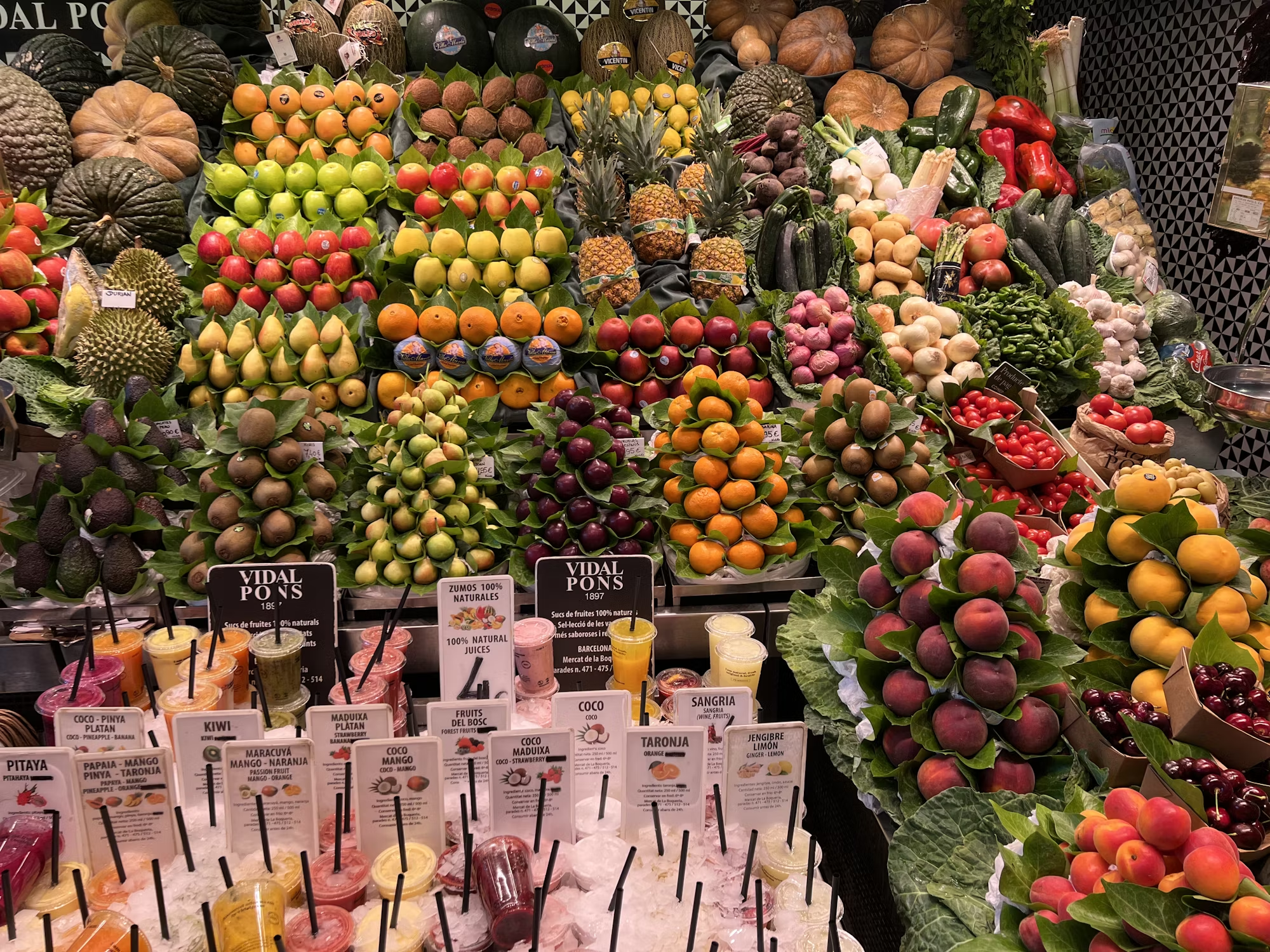Food is a universal experience, but what truly makes a dish memorable is its ingredients. Each culture utilizes unique components that not only enhance flavor but also tell stories of tradition and heritage. In this article, we will embark on a culinary journey to explore iconic ingredients from various cuisines, examining their origins, uses, and the cultural significance they hold. From fragrant spices to vibrant vegetables, these ingredients are the heart and soul of their respective culinary traditions.
Spices play a crucial role in defining the character of many cuisines around the world. In Indian cooking, spices are more than just flavor enhancers; they are essential for creating balance and depth in dishes. Ingredients like turmeric, cumin, and coriander are foundational to curries and dals, contributing not only to flavor but also to color and aroma. Turmeric, with its vibrant yellow hue, is a symbol of health and prosperity in Indian culture, often used in festive dishes.
In the Middle East, spices like saffron, sumac, and za’atar bring warmth and complexity to traditional dishes. Saffron, derived from the crocus flower, is the world’s most expensive spice and is often used in dishes like paella and risotto. It imparts a rich golden color and an earthy flavor that elevates meals to an exquisite level. Sumac, with its tangy flavor, is often sprinkled over salads and meats, adding a unique brightness to dishes. Meanwhile, za’atar, a blend of thyme, sesame seeds, and sumac, is a versatile spice mix used in everything from flatbreads to dips.
Herbs also hold a significant place in global cuisine. In Mediterranean cooking, fresh herbs like basil, parsley, and oregano are fundamental. Basil is the star of classic Italian dishes such as caprese salad and pesto, while parsley adds freshness and color to dishes like tabbouleh. Oregano, particularly in Greek cuisine, enhances the flavors of grilled meats and vegetable dishes, reflecting the region’s emphasis on fresh, simple ingredients. The use of herbs not only enhances the flavor profile but also represents the cultural traditions of using locally sourced ingredients to create delicious meals.
When discussing ingredients, one cannot overlook the role of grains. Rice, for example, is a staple food for more than half the world’s population, with varieties differing by region. In Asia, jasmine rice is often paired with fragrant curries, while in Latin America, short-grain rice is essential for dishes like paella and arroz con pollo. In Italy, arborio rice is used for creamy risottos, showcasing the adaptability of this humble grain. Rice is more than just a side dish; it is a central component of cultural identity and culinary traditions in many societies.
Legumes, including lentils, chickpeas, and black beans, are another vital ingredient in many cuisines. In Indian cuisine, lentils are transformed into dal, a hearty dish packed with protein and flavor. Chickpeas are the star ingredient in Middle Eastern dishes like hummus and falafel, providing not only nutrition but also a creamy texture that enhances the eating experience. In Latin America, black beans are a staple, served alongside rice or as a base for various dishes, highlighting the importance of legumes in providing sustenance and flavor.
The world of vegetables is equally rich and varied. In Asian cuisines, vegetables like bok choy, shiitake mushrooms, and bamboo shoots are frequently used. Bok choy, with its crisp texture and mild flavor, is a popular addition to stir-fries and soups, while shiitake mushrooms lend an earthy depth to broths and sauces. Bamboo shoots add crunch and sweetness, making them a favorite in many Asian dishes. These vegetables not only contribute to the nutritional value of meals but also reflect the seasonal produce available in different regions.
In the Mediterranean, vegetables like tomatoes, eggplants, and bell peppers are fundamental. The vibrant red of tomatoes is the base for sauces, soups, and stews, while eggplants are used in dishes like moussaka and baba ganoush, showcasing their versatility. Bell peppers, whether roasted or sautéed, add color and sweetness to various meals, embodying the region’s emphasis on fresh, seasonal ingredients. These vegetables not only enhance flavors but also play a significant role in Mediterranean dietary practices that prioritize plant-based foods.
Fruits are another essential component of global cuisine, often used in both savory and sweet dishes. In tropical regions, fruits like mangoes, pineapples, and coconuts are celebrated for their sweetness and versatility. Mangoes are a favorite in South Asian cuisines, used in everything from chutneys to desserts. Pineapples add a tropical flair to dishes like fried rice or pizza, while coconut is used in curries and desserts, reflecting the rich flavors of the tropics.
In contrast, in temperate climates, fruits like apples, berries, and citrus fruits shine. Apples are essential in American desserts like pies and crumbles, symbolizing comfort and tradition. Berries, whether used in smoothies, salads, or pastries, add vibrant color and freshness to dishes, highlighting their seasonal nature. Citrus fruits, such as lemons and oranges, are staples in Mediterranean cuisine, enhancing flavors and adding brightness to both sweet and savory dishes.
Proteins are also central to many cuisines, providing essential nutrients and flavors. In Western cuisines, beef, pork, and chicken are often featured in hearty dishes, showcasing a range of cooking techniques from grilling to slow roasting. The classic American barbecue highlights the joy of cooking meats over an open flame, bringing people together for communal meals. In contrast, fish and seafood are staples in coastal regions, with dishes like paella in Spain or ceviche in Peru highlighting the bounty of the sea.
In Asian cuisines, tofu and seafood are often emphasized as protein sources. Tofu, made from soybeans, is a versatile ingredient that absorbs flavors well, making it a popular choice in vegetarian and vegan dishes. Seafood, whether steamed, grilled, or fried, plays a crucial role in Japanese and Chinese cuisines, with fresh ingredients taking center stage in dishes like sushi and dim sum.
As we explore these iconic ingredients, it becomes evident that they are deeply rooted in cultural practices and traditions. The way these ingredients are prepared, presented, and shared reflects the values and heritage of communities around the world. Culinary practices are often passed down through generations, preserving not just recipes but also the stories and connections that define a culture.
In recent years, there has been a growing interest in sustainable cooking practices that prioritize local, seasonal ingredients. Chefs and home cooks alike are increasingly aware of the environmental impact of their food choices, leading to a resurgence of traditional cooking methods that emphasize simplicity and seasonality. This movement encourages a deeper connection to the land and the ingredients that come from it, reinforcing the importance of preserving culinary traditions for future generations.
In conclusion, the exploration of iconic ingredients reveals the rich diversity of global cuisines. Each ingredient contributes to the flavors, textures, and stories of the dishes that define a culture. From the spices of India to the grains of Asia and the vibrant vegetables of the Mediterranean, these ingredients showcase the beauty of culinary traditions. As we continue to celebrate and innovate within these culinary practices, we honor the past while paving the way for a sustainable and flavorful future.



